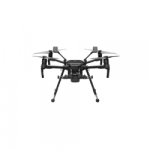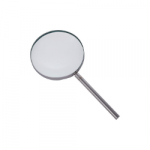The continuous exposure of wind turbines and their blades to heavy rains, bags of dust, winds, and extreme weather conditions results in the reduction of efficiency and performance. Such drastic and momentous environments must be endured by turbine blades without deteriorating the blade’s surface. For the efficient performance of wind turbines, regular inspection and maintenance checks must be executed periodically. Given the size of modern wind turbines, and safety hazards associated with inspections the demand of utilizing drones in the wind turbine industry is on the rise. Industries have adopted drone technology and modern cameras to perform inspections efficiently.
Course of Action for Examining Wind Turbines

Collecting Aerial Data
Collect and access difficult-to-reach areas of a wind turbine.

Analyzing Aerial Data
Analyze the aerial data to identify surface irregularities.

Generating Inspection Reports
Assess the condition of blades and prevent damages.

Collecting Aerial Data
Collect and access difficult-to-reach areas of a wind turbine.

Analyzing Aerial Data
Analyze the aerial data to identify surface irregularities.

Generating Inspection Reports
Assess the condition of blades and prevent damages.
Traditional Inspection
Team Required
4-5 Hours Process
Closeup Images
Hazardous Process
Modern Inspection
Single Person Job
45 Mins Process
360 Degree Images
100% Safe Process
The traditional wind turbine inspection method is one of the riskiest inspection methods. It comprises human interaction where the person inspecting blades or capturing pictures manually climbs up the wind turbine with the help of safety ropes. It requires an intense amount of teamwork where a tiniest mistake can lead to the loss of life. It is an expensive and time-consuming process. It is also difficult to access fragile parts of a wind turbine such as wingtips.
With the development of drone technology coupled with advanced, high definition cameras, the safety factors associated with traditional inspection methods for a wind turbine can be completely eliminated. With modern inspection methods, there is no human interaction involved with wind turbine blades. It is comparatively a cost-efficient, less time-consuming process that requires a single drone operator to capture the data. The most difficult-to-reach areas can be easily accessed numerous times without any restrictions.
What Makes Drone Inspection Best for Wind Turbines?
1
Quick Operations
Drone inspections are faster and rapidly collect aerial data as compared to manual inspection methods.
2
Safe Working
As drones eliminate the need of climbing high altitudes of blades, it makes inspection checks easier and safer to conduct.
3
Non-Accessible Parts
The difficult to reach areas can be easily accessed with the help of drone photography.
4
Accurate Quality
With modern and advanced visual and thermal cameras the quality of aerial data is of the highest standards.
5
Cost Efficient
There is a significant amount of cost improvement and savings when using drones for blade inspection.
6
Reduce Time
Quickly accessing data with the implementation of automated technologies time of the inspection is significantly reduced.
Identify Deformity
Prevent Damage
Detect Errors
Improve Analysis, Reporting, and Transparency with
Modern Inspection Method
With drone data collection one can identify surface irregularities conveniently, and provide comprehensive reports for inspection. Aerial data does not risk manpower while flying and capturing data in a minimal time while ensuring maximum safety. Equipping drones with thermal and visual cameras provides in-depth analysis and assessment of structures at a fraction of cost with minimum time. The data is collected from the best possible perspectives from various views and at different angles. The inspection methods are carried out to assess the possible failures, prevent damages, and improve the aerodynamic efficiency of turbine blades. Implementing a regular inspection method provides a better understanding of the conditions of blades that needs regular maintenance, cycle planning, and overall performance of wind turbine while optimizing the life of blades.
